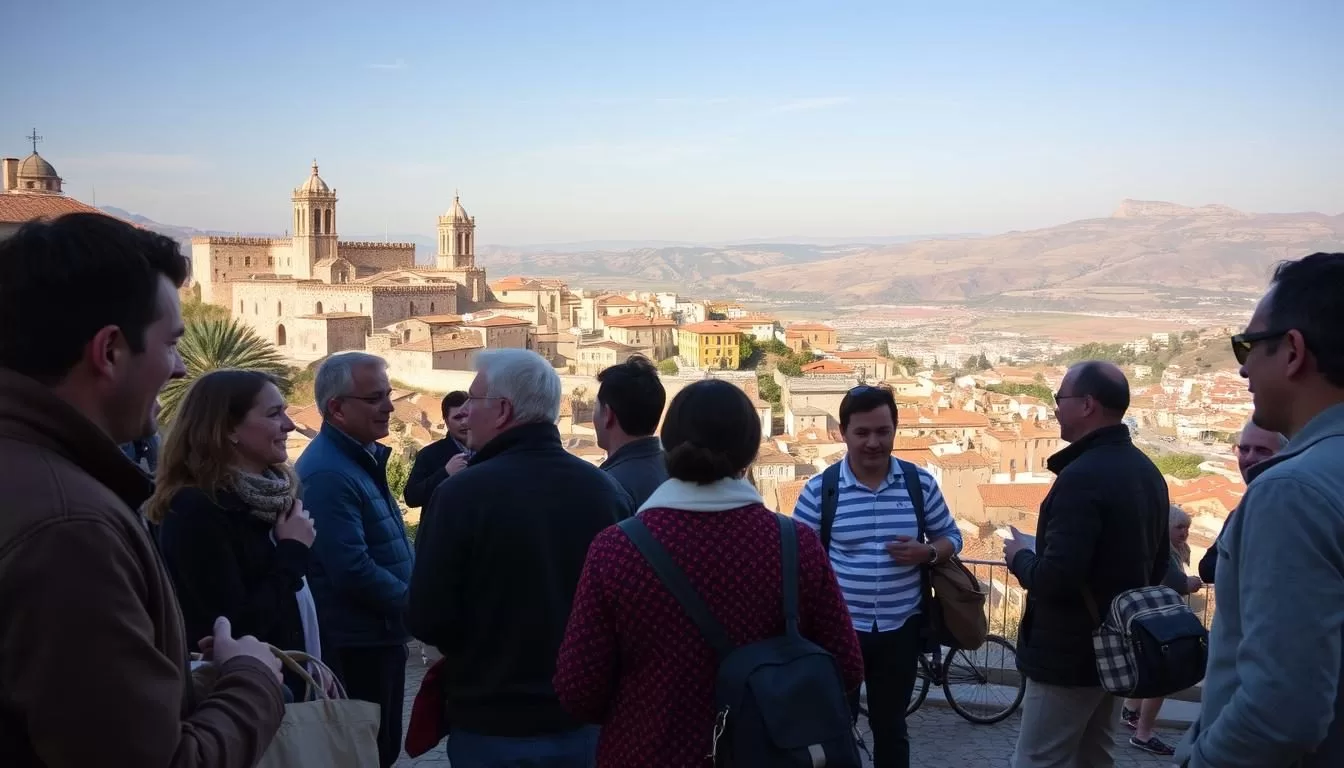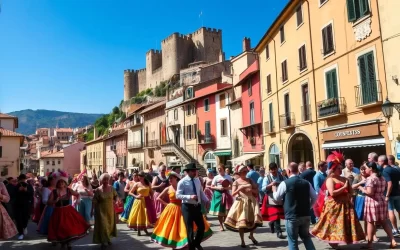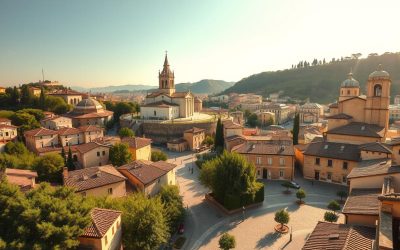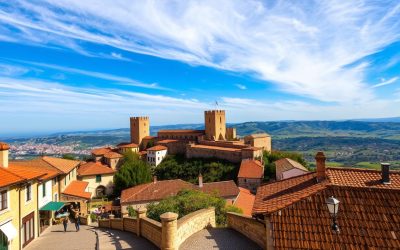Nestled in the heart of the Apennine Mountains, San Marino is a small yet fascinating state. Known as the world’s oldest republic, it boasts a rich history and a unique cultural identity. One of the key elements that define this microstate is its linguistic heritage.
The official language here is Italian, which is spoken by the majority of the population. This reflects the country’s close ties with its neighbor, Italy. Additionally, the Sammarinese dialect, a variant of the Emiliano-Romagnolo language, holds a special place in the hearts of locals. However, this dialect is considered under threat due to its limited transmission to younger generations.
With a population density of over 860 people per square mile, this tiny republic thrives on its traditions and close-knit community. The towering Mt. Titano, a UNESCO World Heritage Site, stands as a symbol of its enduring status and pride.
Ready to explore how language shapes life in this mountainous republic? Let’s dive deeper into its linguistic landscape.
Overview of San Marino’s Unique Linguistic Landscape
Surrounded by Italy, this tiny country boasts a rich linguistic heritage. Its geographic setting plays a significant role in shaping its culture and language. Nestled in the Emilia-Romagna region, it is entirely enclosed by Italy, creating a unique blend of influences.
Geographic and Cultural Influences
The mountainous terrain of this enclave has shaped its way of life. With a population of under 32,000, the close-knit community thrives on traditions passed down through generations. Its proximity to Italy has deeply influenced its culture, from cuisine to dialects.
Despite its small size, this microstate has maintained its independence for over 17 centuries. This long history has allowed it to preserve its unique identity, even as it adapts to modern times.
A Glimpse into San Marino’s Historical Background
Founded in 301 AD, this republic is the oldest in the world. Its origins trace back to Saint Marinus, a stonemason who sought refuge in the mountains. Over time, this enclave expanded to its modern-day size, blending tradition with progress.
Historical events, such as its neutrality during World War II, have further shaped its identity. Today, it stands as a testament to resilience and cultural pride, offering a fascinating glimpse into the past.
San Marino: Official and Widely Spoken Languages
In the heart of Europe, a small republic thrives with a unique linguistic heritage. Its language system reflects a blend of tradition and modernity, offering a fascinating glimpse into its culture.
Understanding Standard Italian’s Role
Italian serves as the everyday language here, used in schools, media, and government. This reflects its status as the most prominent language in the region. With over 65 million native speakers in Europe, Italian connects this microstate to a broader cultural network.
Despite its widespread use, the local dialect holds a special place in the hearts of residents. This dual-language system highlights the republic’s ability to balance tradition with practicality.
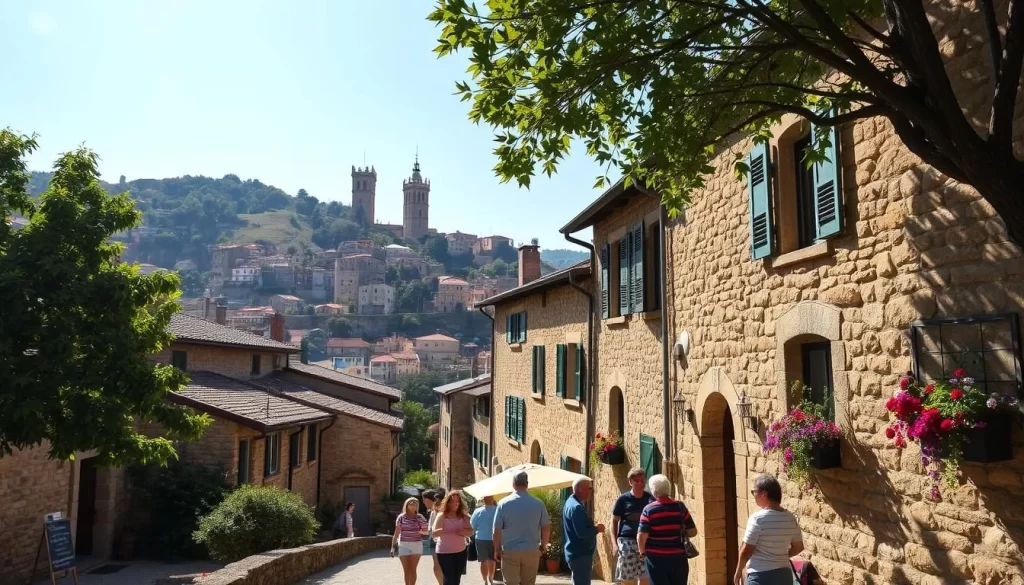
Exploring the Sammarinese Dialect
The Sammarinese dialect, a variant of Emiliano-Romagnolo, is deeply rooted in the region’s history. It’s a New Latin language influenced by German and various forms of Latin. Approximately 83% of the population speaks this dialect, showcasing its cultural significance.
However, the dialect faces challenges. Younger generations are less likely to learn it, putting its future at risk. Efforts to preserve this linguistic treasure are ongoing, ensuring it remains a part of the national identity.
“Language is the roadmap of a culture. It tells you where its people came from and where they are going.”
| Language | Usage | Significance |
|---|---|---|
| Italian | Everyday communication | Official and widely spoken |
| Sammarinese Dialect | Local traditions | Cultural heritage |
Both Italian and the Sammarinese dialect contribute to the republic’s identity. While Italian unifies the population, the dialect preserves its unique cultural roots. Together, they create a linguistic landscape that’s as diverse as it is rich.
How Languages Shape San Marino’s National Identity
Language plays a vital role in shaping the identity of this small republic. It’s more than just a way to communicate—it’s a part of who they are. Every word spoken reflects centuries of tradition and unity.

The Impact on Culture and Community
In this tiny state, language binds families and communities together. It’s a shared thread that connects every person, from elders to the younger generation. The Sammarinese dialect, for example, is a symbol of pride and heritage.
Daily conversations often include this dialect, reinforcing a sense of belonging. It’s not just about words—it’s about preserving a way of life. This linguistic bond helps maintain a strong national identity, even in modern times.
Historical moments, like the founding of the republic in 301 AD, highlight how language has shaped society. Over the centuries, it has evolved but remains a cornerstone of cultural pride.
“Language is the soul of a nation. It carries the stories of the past and the hopes of the future.”
From everyday interactions to special occasions, language is a day-to-day reminder of shared values. It’s a bridge between the old and the new, ensuring that traditions are passed down through generations.
Language and Daily Life in San Marino
In this compact republic, daily life is shaped by a unique blend of languages. While Italian is the primary language, the Sammarinese dialect adds a distinct flavor to everyday interactions. This multilingual environment influences how people communicate, whether at home, work, or school.
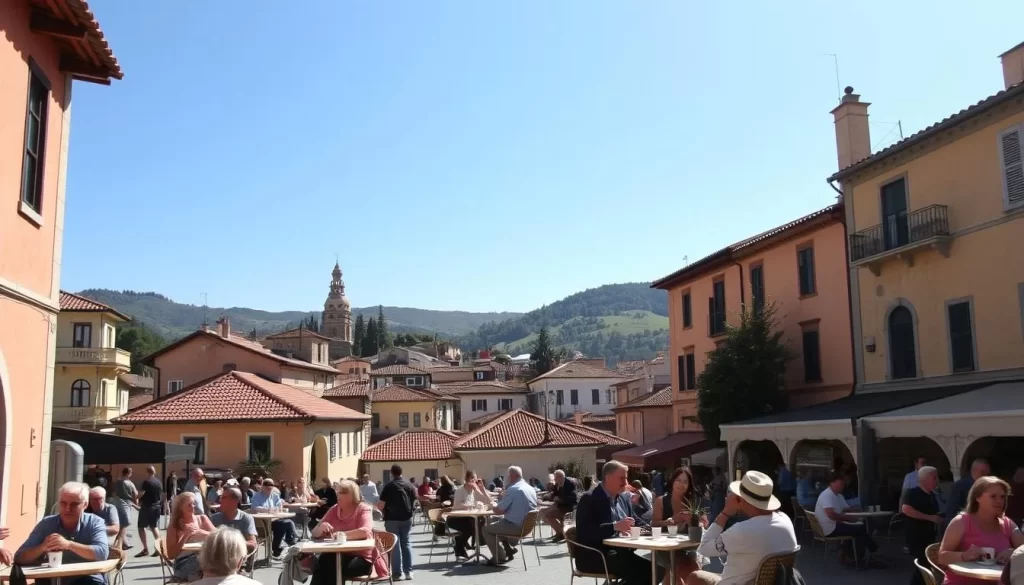
Communicating in a Multilingual Environment
In this small state, you’ll hear Italian in most formal settings. Schools, offices, and media rely on it for clarity and consistency. However, the Sammarinese dialect often emerges in casual conversations, especially among older generations.
Local expressions are common in marketplaces and family gatherings. These phrases add character to the compact area, where distances are short, and the population is tightly knit. This blend of languages reflects the country’s evolving social fabric over the centuries.
At work, you might hear both Italian and the dialect. Colleagues switch between them depending on the context. This flexibility highlights the practical side of living in a multilingual society.
“Language is the thread that weaves a community together, connecting the past to the present.”
| Setting | Language Used | Impact |
|---|---|---|
| Workplace | Italian, Sammarinese Dialect | Enhances communication and cultural pride |
| Schools | Italian | Promotes unity and educational standards |
| Family Life | Sammarinese Dialect | Preserves traditions and strengthens bonds |
This linguistic mix is a testament to the republic’s ability to balance tradition with modernity. Whether you’re walking through its historic streets or enjoying its scenic views, language remains a vital part of life here. For more insights into its culture, explore this detailed guide.
Language’s Role in Tourism and International Appeal
Visitors to this historic country often find themselves charmed by its linguistic warmth. The unique blend of languages here adds a special touch to every traveler’s experience. From the friendly greetings in Italian to the heartfelt expressions in the local dialect, language plays a key role in making tourists feel at home.
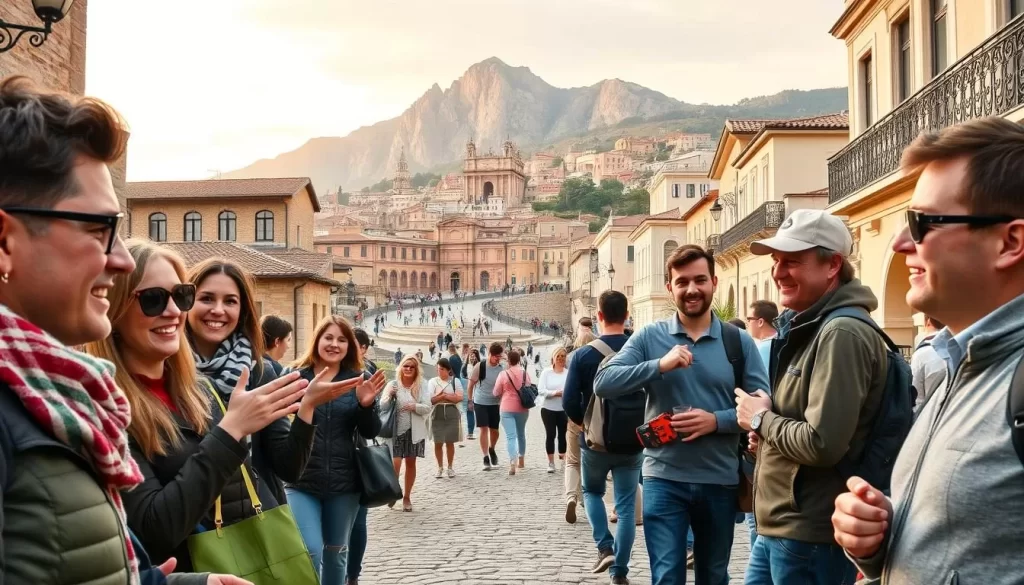
Connecting with Visitors Through Local Expressions
Local dialect expressions serve as a unique welcoming tool for tourists. Phrases like “Benvenuti” (welcome) or “Grazie” (thank you) are often accompanied by the warmth of the Sammarinese dialect. This linguistic blend creates a memorable experience, especially for those exploring nearby iconic sites like Vatican City.
The cultural region here is known for its hospitality, and language is a big part of that. Whether you’re shopping in a local market or dining in a family-run restaurant, the way locals communicate adds authenticity to your visit. It’s these small, day-to-day interactions that leave a lasting impression.
“Language is the key to unlocking the heart of a culture. It’s how we connect, share, and understand.”
| Aspect | Impact on Tourism |
|---|---|
| Local Dialect | Creates a welcoming and authentic atmosphere |
| Italian Language | Facilitates clear communication with visitors |
| Cultural Expressions | Enhances the overall visitor experience |
This linguistic richness is a testament to the country’s ability to balance tradition with modernity. Whether you’re strolling through its historic streets or enjoying its scenic views, language remains a vital part of the experience. For more insights into its culture, explore this detailed guide.
Conclusion
The linguistic tapestry of this historic republic reflects its resilience and cultural pride. Italian, as the primary language, unites its population, while the Sammarinese dialect preserves its unique heritage. Together, they create a dual system that bridges tradition and modernity.
This small state has thrived for centuries, blending its rich history with a vibrant present. The role of language extends beyond communication—it strengthens family bonds and fosters community pride. From daily interactions to tourism, it shapes every part of life here.
Explore the cultural richness of this republic further. Dive into its linguistic heritage and discover how it continues to inspire and connect people across generations. For more insights, visit this detailed study or learn about its historic sites here.
The above is subject to change.
Check back often to TRAVEL.COM for the latest travel tips and deals.
Here are some Tours & Sightseeing suggestions that might pique your interests!
